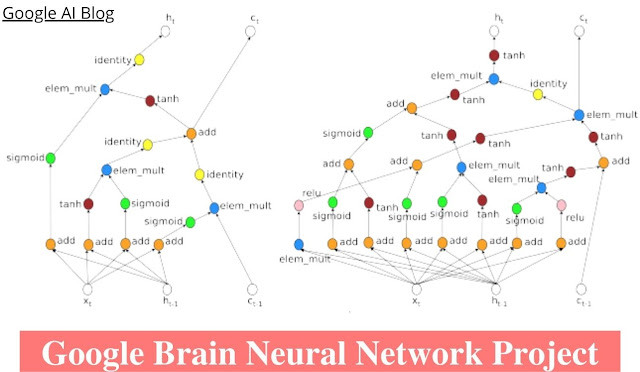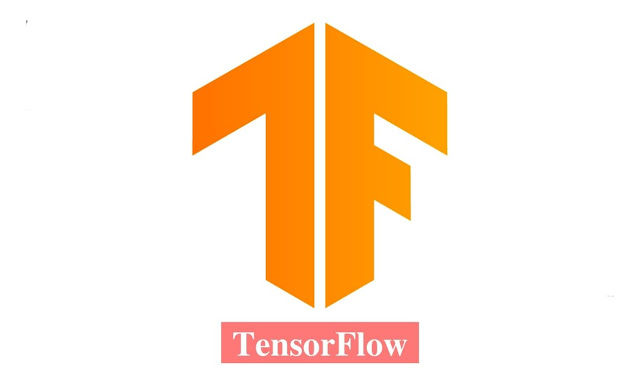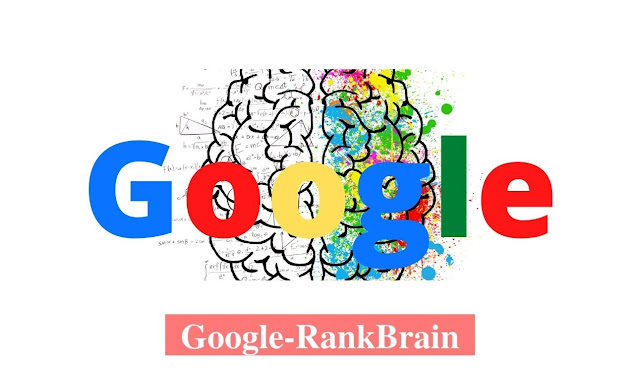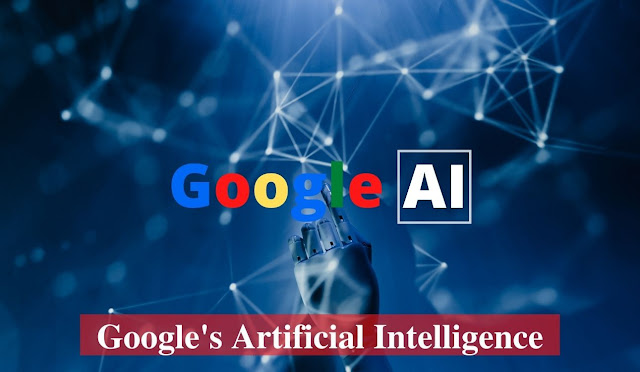Technology: Google's artificial intelligence deep dissection
The era of artificial intelligence
technology has arrived - Google is based on AI, integrates it into life, and
makes the impossible possible
As early as HAL9000 in Stanley Kubrick's
"2001: A Space Odyssey" in 1968, to R2-D2 in "Star Wars" in
1977, to David in "AI" in 2001, to the recent "Star Wars: The
Force Awakens BB-8, the countless movie robots, rely on the forward-looking
creations of Hollywood visionaries to bring us closer to artificial
intelligence.
From AlphaGo and Lee Sedol at the game of
Go to various smart products, including Google Home, Google Assistant, and
cloud computing hardware, Google has officially established a corporate
strategy that prioritizes artificial intelligence. AI business covers
everything from hardware to software, search algorithms, translation, speech
and image recognition, unmanned vehicle technology, and medical and pharmaceutical
research.
The ultimate goal of AI is to imitate the
operation of the brain, and the GPU promotes the popularization of AI, but
three major problems still need to be solved
The ultimate goal of artificial
intelligence is to imitate the thinking and operation of the human brain, but
now the more mature supervised learning (Supervised Learning) does not follow
this model. But in the end, unsupervised learning is the most natural way for
the human brain to learn.
We believe that in the past 5-10 years,
artificial intelligence has been commercialized and popularized mainly due to
the rapid increase in computing power: 1) the breakthrough of Moore's Law,
which has accelerated the decline in hardware prices; 2) the popularity of
cloud computing, And 3) the use of GPUs has improved multi-dimensional
computing capabilities, which has greatly promoted the commercialization of AI.
There are three major problems in machine learning:
- Need to rely on a large
amount of data and samples to train and learn;
- Learning in a specific
sector and domain (domain and context-specific);
- It is necessary to
manually select the data expression method and learning algorithm to
achieve optimal learning.
The market value of Google is seriously
underestimated, and the rise of the lunar exploration business will usher in a
new golden decade
The core of the company's profitability is
the artificial intelligence-driven search and advertising business. Although
the advertising business still accounts for 90% of revenue, with the rise of
the Other Bets business in 3-5 years, Google will usher in a new golden decade.
Now the market has been comparing Facebook and Google. Google's 2017 PE was
19x, compared to FB's 22x, we think Google is seriously undervalued. In
Google's advertising business, the increase in the proportion of mobile
compared to the decrease in the proportion of PC is a transition period for the
new normal. The huge growth potential of 2B cloud computing and YouTube and the
development of artificial intelligence are also far ahead of FB. The high-speed
revenue growth of the lunar exploration business also proves that Google's
innovation ability has continued to increase. Relying on the accumulation of
artificial intelligence and the lunar exploration business will rise one by one
in 3-5 years, Google can be regarded as a VC investment portfolio for a long
time, even if only one or two projects are successful, the market value can be
greatly increased in the future. We think 23x PE in 2017 is reasonable, with a
target price of $920 and a "buy" rating.
The Soul and Backbone of Google: Artificial Intelligence
Technology
Google's artificial intelligence business
covers everything from hardware to software, search algorithms, speech and
image recognition, translation, unmanned vehicle technology to medical and drug
research, and is the soul and backbone of the company. Here we sort out the
various businesses of Google AI.
1.
Google Brain Neural Network
Project
The project Google Brain, created in 2011,
is the cradle of many familiar projects, including TensorFlow, Word Embeddings,
Smart Reply, Deepdream, Inception, and Sequence-to-sequence. Deep learning is
critical to Google and is a very efficient tool for training computers to
recognize images and videos, giving them human-like capabilities in face
judgment, object recognition, and natural language analysis.
 |
| Google Brain Neural Network Project |
2.
The second-generation machine
learning open-source platform: TensorFlow
In November 2015, Google announced to open source TensorFlow under the Apache 2.0 open source license. The operating principle of TensorFlow is to transmit the data represented by the structure tensor (Tensor) to the artificial intelligence neural network for analysis and processing. Its performance is up to 5 times faster than the first generation artificial intelligence system DistBelief. In April 2016, Google's DeepMind, which developed the AlphaGo Go robot, announced that all future research projects would use the TensorFlow platform.
 |
| TensorFlow |
3. Google's latest search algorithm: RankBrain
RankBrain, an automated artificial
intelligence search system that was added to Google's search algorithm in
October 2015, has become the third most important part of the entire algorithm
in just a few months. The RankBrain system helps Google process search results
and provide relevant information, and can handle 15% of the previously
unhandled search requests in Google searches every day.
 |
| Google RankBrain |
4.
Google Driverless Cars and
Google Drivers
At the end of 2014, Google proposed the
concept of a prototype of an unmanned vehicle without a steering wheel and
brakes. It is designed to be fully unmanned. The main components include a set
of LIDAR (Light Detection and Ranging) sensor computing systems composed of 64
laser units. The driverless car is powered by a navigation and map-scanning
system that costs between $75,000 and $85,000. The unmanned vehicle is equipped
with the Google Chauffeur artificial intelligence control system. When the
camera and the LIDAR sensing system scan the surrounding environment of the
vehicle and input it into the computer, the computer system judges the type of
the object according to its shape, size, movement form, and other
characteristics.
 |
| Google Driverless Cars |
5.
The Combination of Machine
Learning and Machine Vision: Image Recognition
In 2013, Google announced that it would add
computer vision or machine vision (Computer Vision or Machine Vision) and
machine learning technology to its image search function. Users only need to
enter the name of the query item to get the corresponding photo search results.
The image recognition technology is based on the architecture of the
first-generation deep learning system DistBelief. The core technology is the
redesigned convolutional neural network and distributed learning. Compared with
the neural networks of other teams, the neural network architecture reduces the
parameter settings by more than 10 times.
 |
| Image Recognition |
6.
Natural Language
Understanding Open Source Platform: SyntaxNet
In May 2016, Google open-sourced its
natural language understanding (NLU) platform SyntaxNet based on machine
learning platform TensorFlow and released Parsey McParseface, a training parser
(English Parser) program for English. SyntaxNet uses a deep neural network to
solve the problem of language ambiguity. After inputting the sentence to be
analyzed, SyntaxNet processes each word from left to right, and gradually adds
the dependencies between the analyzed words.
7.
Natural Sentence
Understanding and Machine Translation: Gmail/Inbox Smart Reply
Gmail/Inbox Smart Reply, launched in
November 2015, uses deep learning technology to write email replies. Gmail uses
machine learning technology to identify emails that require a user's response
and provides three suitable candidate response answers.
8.
The AI behind Allo’s Smart
Reply
In Allo, apps can also generate smart reply
options from the user's conversation transcript. The Allo team used a method
similar to the "encode-decode" two-step model, first using a
recurrent neural network to encode the dialogue sentence word by word to
generate the corresponding password (token). Then the password enters a
long-short term memory (LSTM) neural network to generate a continuous vector,
which is further passed through the softmax model to generate a discrete
semantic class (discretized semantic class). The next step for the Allo team is
to use a second recurrent neural network to pick the most appropriate response
from the set of selectable words.
9.
Google Translate: Machine
Translation Systems and Image Recognition
Google released Google Translate 10 years
ago, and the core algorithm behind it is Phrase-Based Machine Translation
(PBMT). The neural machine translation system (NMT) used by Google this time
treats the entire sentence as the basic input unit for translation.
 |
| Google Translate |
10. DeepMind's
Deep Q-Network (DQN): imitating the experience playback of the human hippocampus
DeepMind published a paper "Deep
Reinforcement Learning at the Human Control Level" in Nature in February
2015, describing the deep neural network Deep Q-Network (DQN) is developed to
transform Deep Neural Networks ) combined with reinforcement learning
(Reinforcement Learning) deep reinforcement learning system (Deep Reinforcement
Learning System). Q-Network is a model-free reinforcement learning method,
which is often used to make optimal action selection decisions for finite
Markov decision processes.
11. DeepMind
launches text-to-speech system WaveNet
DeepMind also launched WaveNet, new
research in the field of computer speech synthesis. This is a text-to-speech
(TTS) system that uses a neural network system to model the raw audio waveform
(Raw SoundWave). DeepMind says the audio quality generated by WaveNet reduces
the gap between computer output audio and natural human speech by 50%,
surpassing all previous text-to-speech systems.
12. DeepMind's
medical exploration using image recognition technology
More than 3000 ophthalmic optical coherence
tomography (OCT) scans are performed every week at Moorfields Eye Hospital in
London, England. The hospital provides DeepMind with 1 million eye scan image
data of patients, as well as routine diagnosis and treatment measures.
13. Large-scale
machine learning for drug discovery
In February 2015, Google and Stanford
University jointly submitted a paper discussing "Large-scale Multitasking
Networks for Drug Discovery". Google is collaborating with a Stanford
University lab to explore how to use data from multiple sources to improve
accuracy in choosing which compounds are effective in treating diseases. Going
a step further, Google measured different amounts and types of biological data
from multiple disease treatments to improve the predictive accuracy of virtual
drug screening.
14.YouTube video thumbnails with counting machine vision
In October 2015, Google announced the
launch of a computer vision technology that uses deep neural networks in image
and video classification and recognition to bring better abbreviations to
YouTube. When choosing a video thumbnail, the program's "quality
model" scores the images, and Google now adds deep neural network
technology to this model.
15. The
ultimate solution for machine learning computing power: quantum computing
In May 2013, Google announced the official
establishment of its Quantum Artificial Intelligence Laboratory jointly
established with NASA's Ames Research Center and the Universities Space
Research Association (USRA). The lab, located at NASA's Moffett Federal
Airfield in Silicon Valley, California, houses a D-Wave 2 quantum computer that
Google bought from quantum computer maker D-Wave Systems. Google's goal is to
use the powerful computing power of quantum computers to fully explore
technologies in the fields of artificial intelligence and machine learning and
build better learning models for research in weather forecasting, disease
treatment, search algorithm improvement, and speech recognition. Quantum
computers can solve such problems more efficiently, that is, skip the local
optimal solution and directly find the optimal solution.
16. Self-developed
AI hardware: Tensor Processing Unit TPU
At present, Google's cloud platform already
has cloud machine learning, computer vision API, and language translation API,
so that all users who use Google's cloud computing platform can use the machine
learning system that Google has been using.
To support the operation of its cloud
platform, Google has designed a hardware device customized for artificial
intelligence operations, the Tensor Processing Unit (TPU) chip. The chip is an
integrated chip tailored for machine learning and TensorFlow built on an ASIC
chip.













No comments:
Post a Comment